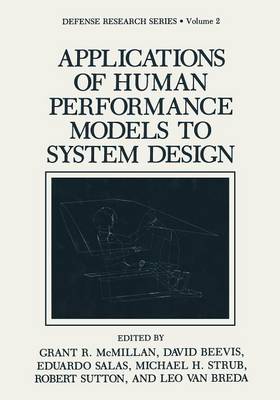Defense Research
1 primary work
Book 2
Applications of Human Performance Models to System Design
by Grant R. McMillan, David Beevis, and Eduardo Salas
Published 1 August 1989
The human factors profession is currently attempting to take a more proactive role in the design of man-machine systems than has been character istic of its past. Realizing that human engineering contributions are needed well before the experimental evaluation of prototypes or operational systems, there is a concerted effort to develop tools that predict how humans will interact with proposed designs. This volume provides an over view of one category of such tools: mathematical models of human performance. It represents a collection of invited papers from a 1988 NATO Workshop. The Workshop was conceived and organized by NATO Research Study Group 9 (RSG.9) on "Modelling of Human Operator Behaviour in Weapon Systems". It represented the culmination of over five years of effort, and was attended by 139 persons from Europe, Canada, and the United States. RSG.9 was established in 1982 by Panel 8 of the Defence Research Group to accomplish the following objectives: * Determine the utility and state of the art of human performance modelling. * Encourage international research and the exchange of ideas. * Foster the practical application of modelling research. * Provide a bridge between the models and approaches adopted by engineers and behavioral scientists. * Present the findings in an international symposium.
